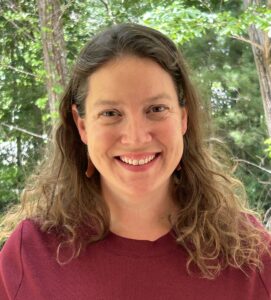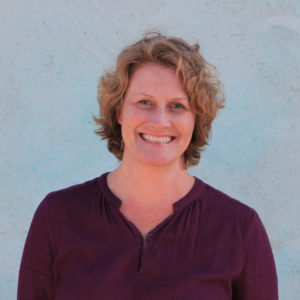Communities of Practice: Professional Learning for Educators, by Educators


The term “community of practice” is becoming a regular part of discourse when we talk about educator professional learning, and for good reason.
Communities of practice reimagine professional development so that school-based educators – who are the experts on teaching and learning in their specific context – determine not just the content but also the process by which they will strengthen their practice.
While specialists outside of the school are knowledgeable and often have been teachers themselves, it is the educators within a school community who are immersed in inspiring, instructing, comforting, liaising, counseling, assisting, leading, and learning from students and families every day. Who better to drive professional learning than the practitioners themselves?
A community of practice is a “sustained learning partnership among people who share a concern or a passion for something they do and learn how to do it better as they interact regularly” (Wenger-Trayner, n.d.). Members support each other in exploring skills, experiences, and tools related to their community’s purpose, and then determine collectively and individually how to apply new knowledge and skills to their unique contexts.
In 2022, Childhood Education International collaborated with a group of teachers working in displacement settings in Nigeria, Lebanon, and Kenya to form a community of practice focused on quality holistic learning (QHL) . They held formal community meetings on Zoom regularly and created informal WhatsApp channels to check in with each other, share lesson ideas, and hold each other accountable to their purpose of building quality teaching and learning spaces in crisis settings.
This unique community showed that communities of practice can transcend one school or one geographic location. It offers a vision of the future of professional learning and collaboration where educators can share effective practices outside their national or regional boundaries.
In successful communities of practice such as the one described above, learning is contextual, specific, open-minded, and supportive. Every member – from the first-year teacher to the 30-year veteran – is invited to share their successes, challenges, questions, and resources as equals. Educator communities of practice can be hubs of creativity and care, often leading to greater innovation, motivation, and resilience.
Much of the foundational understanding around communities of practice was laid down by Bev and Etienne Wenger-Treyner. In “Introduction to Communities of Practice” (2015), they explain how communities of practice can positively impact businesses, NGOs, and education systems by offering employees a highly relevant and supportive space for professional growth.
But in many ways, communities of practice have existed as long as humans have existed. Humans are social creatures. We live in communities, look to our friends for support and laughter, work on teams, and spend time with our families. Learning is therefore inextricably connected to our social spaces.
Social learning can be formally organized (think of a musical group working on a new piece together or a football team learning a new play), but it also happens outside of an intentional structure. Think of how a late-night discussion with friends can lead to new perspectives or how observing elders in the kitchen can teach us skills and knowledge connected to our pasts.
Communities of practice build on our natural inclination to learn together, and the power that comes from the social learning experience.
When we learn in isolation, we may be able to focus on issues that are most pressing or most interesting to ourselves, but we lose the opportunity to see issues from multiple perspectives. By opening ourselves up to learning with others – to social learning – we deepen our understanding of the world and are exposed to new opportunities for learning and growth.
In the case of education, learning with and from colleagues can lead to greater insight about our students and our instruction, to better tools to serve children and their families, and to a heightened sense of purpose throughout our practice.
When we teach (or counsel or coach or lead) in isolation, we run the risk of missing opportunities for growth. We “don’t know what we don’t know,” as the expression goes. Discussing our work with others can illuminate areas for improvement within our own practice, and our insights and experiences may offer similar illumination to our colleagues. In this way, we become collectively stronger as a teaching staff that, in turn, better serves our students, their families, and the community at large.
CE International’s Center for Professional Learning (CPL) supports organizations and groups in developing and facilitating educator communities of practice. While it is not necessary for an outside organization or consultant to facilitate a community of practice, it can be helpful to have some external support to help with the launch and to encourage ongoing participation.
When we are asked to support the development of a community of practice, we see our role as a space-maker, a convener. We discuss what is possible, and then co-create with the members of the community of practice so they can turn that possibility into reality.
CPL can – especially in the beginning – guide some of the processes, facilitate meetings when invited, or provide learning content/resources to help the community to get started. The ultimate goal, however, is for community members to drive the content and practices of the community of practice, and to eventually take full ownership of the shared learning space.
In 2024, 40 aspiring teachers of refugee and immigrant backgrounds, 12 coaches, and three CPL staff members formed a virtual community of practice to explore creative pathways to a career in education in the U.S. The Pathways to Teaching Project (PTP) came to life as each member of the community shared their transnational experiences in education. Members decided what they wanted to learn more about and how.
We came together monthly on Zoom as a whole group, and attended or facilitated optional workshops on specific aspects of education in the U.S., such as early child development or social and emotional learning. The PTP community of practice highlighted a major benefit of this type of professional learning — no matter our prior experience, each of us took away from our shared learning something we could apply to our unique education context.
Through other projects, CE International has supported communities of practice in a variety of contexts. Examples include the Holistic Language Pedagogies project in Ukraine, a Refugee Educators Professional Learning Series in Arizona (USA), and the Social and Emotional Character Development project in Serbia.
So, you’re thinking of establishing a community of practice (or strengthening an existing one). Great! The following questions may help you to get started:
When you’re ready to get the community of practice started, keep in mind the three key elements that set this impactful professional learning opportunity apart from traditional groups or professional development structures:
Regular meeting times, co-created norms, opportunities for reflection/evaluation, and strategies for knowledge-keeping are all important, but your community can decide how to make those work for your particular context and purpose.
Additionally, having support from and/or including school leadership in the community of practice is essential to its sustainability for two main reasons. First, setting aside time for meetings during the school day can help to engage and retain members. Second, having your school or program leader on board can help to move the innovative thinking and action from the community of practice to the school community at large.
We offer several free resources to support your development of communities of practice:
Our Open Educational Resource Library offers free professional development materials for educators and other education leaders.
Resources related to communities of practice include:
We offer one free short course on communities of practice and have another planned for the future:
To access the course, follow the links above and sign up to create a free account. You will then be able to follow the links and access this and other free courses.
Childhood Education International offers customized technical assistance and consulting services and can work with you directly to launch and/or facilitate a community of practice to meet your needs. Contact Meg Riley to learn more, talk through your ideas for a community of practice, or partner with us in establishing a community of practice that will impact your school community.

Sarah Bracken brings over 15 years of education experience as a secondary classroom teacher, instructional coach, online course facilitator, and curriculum writer. She spent her childhood living abroad in Zagreb, Hong Kong, Montreal, and Manila which is probably why she gravitated toward teaching positions where she could learn from and support culturally and linguistically diverse newcomers. Sarah is a Nationally Board Certified teacher with a B.A. from the University of Virginia and a master’s in teaching from The Evergreen State College. She taught in Washington state, Maryland, Virginia, and Alaska before joining CPL as a consultant in 2020, and then as a senior project associate in 2024.
Sarah calls western North Carolina home. She tries to play outside with her family every day, whether it’s kayaking, hiking, camper-ing, or running through a sprinkler in the backyard.
 Meg Riley, CPL Senior Program Manager
Meg Riley, CPL Senior Program ManagerMeg Riley is a native of Minnesota and longtime resident of Arizona, where she lives with her husband and dog and her two daughters (during college breaks). After graduating from the University of Vermont with a political science degree, she returned to Minnesota to work on her master’s in teaching and start her teaching career. She has worked in a variety of education spaces, including eight years teaching middle school social studies and nine years teaching high school ESL.
After leaving the classroom, she transitioned into managing federal AmeriCorps grants at Prescott College. These education grants were focused on implementing a community schools strategy in under-resourced public schools to reduce chronic absenteeism and increase graduation rates and postsecondary access to college and career. She later served as program director overseeing a large education grant and an economic opportunity grant utilizing AmeriCorps members working with preschool age to high school students and developing job readiness skills for opportunity youth. Meg continued working in federal grants at a large public school district writing grants and coordinating implementation of the funds, services, and monitoring for schools identified for federal improvement. In addition, she facilitated the Arizona cohort of the pilot Refugee Educator Academy and has assisted in the revitalization of the course.